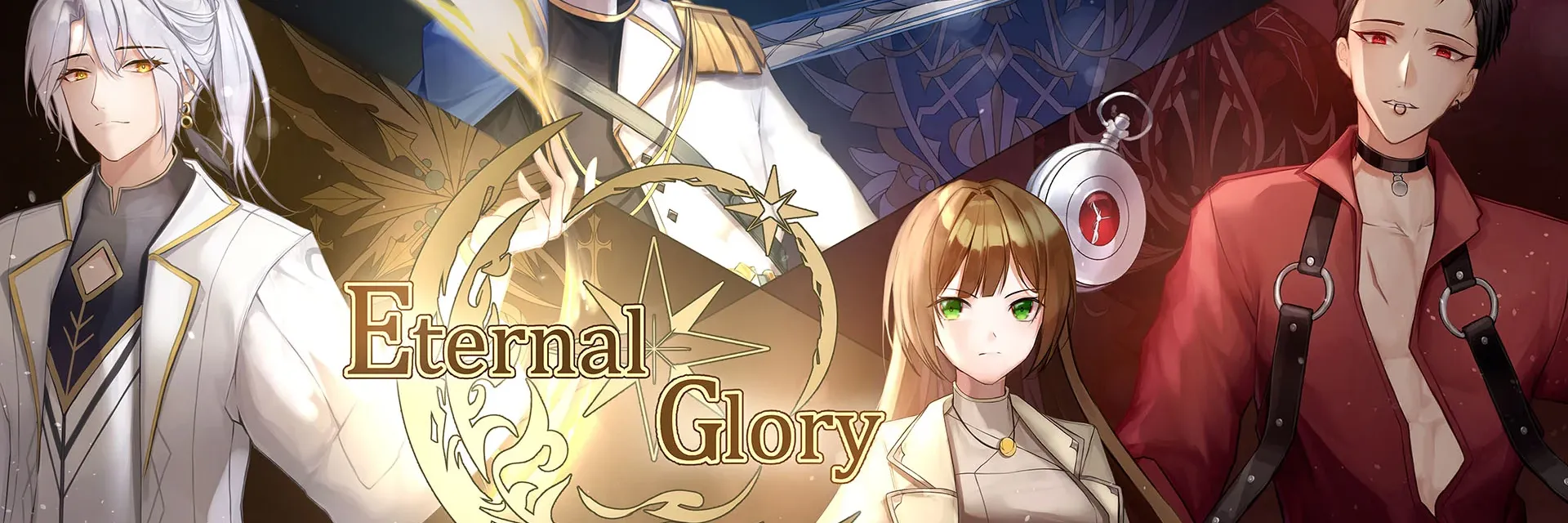
Eternal Glory Demo
Nine years have passed since the day that curse befell me. Today, for the first time, I return to the ruins of the house where I once lived with my parents.
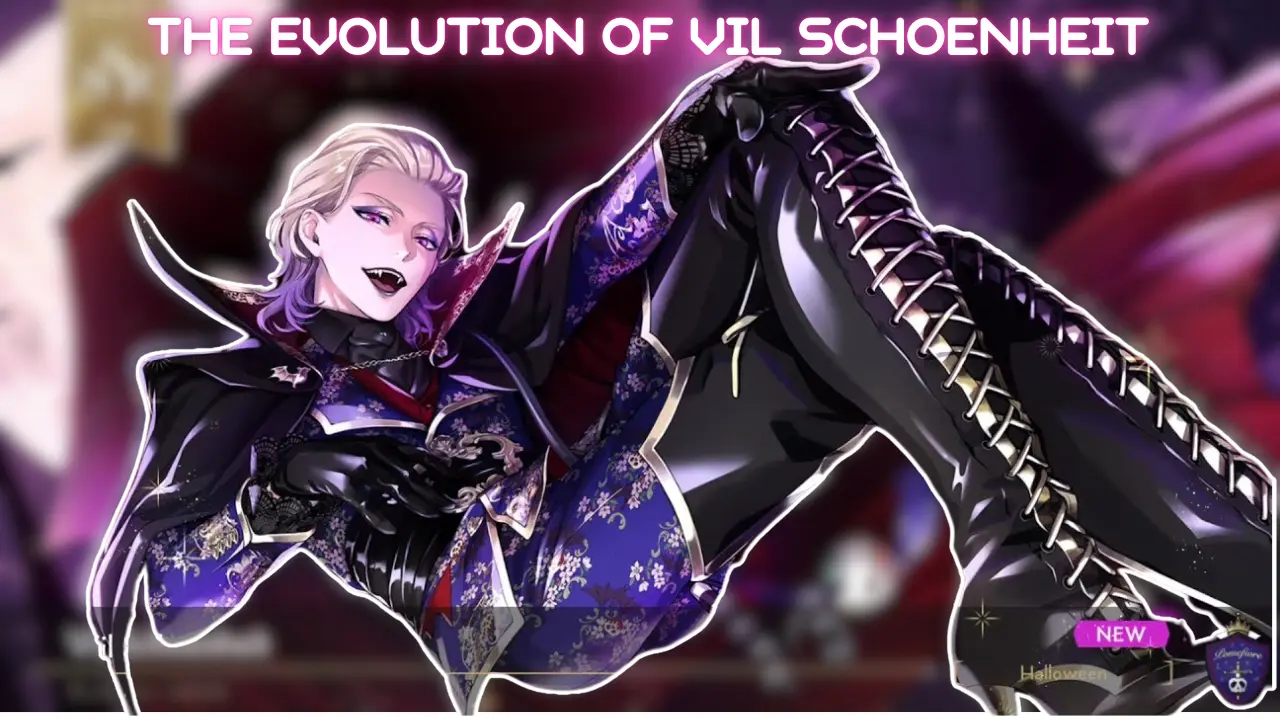
Among the myriad interpretations of classic tales, Vil Schoenheit stands out as a profound reimagining of the famed Evil Queen, seamlessly blending historical underpinnings with contemporary sensibilities. As we unravel the intricacies behind Vil’s design and narrative arc in Twisted Wonderland, we explore the transformation of age-old themes into a modern tapestry of elegance and complexity.

Character design is a pivotal element in storytelling, serving as a visual representation of a character’s personality, backstory, and role within a narrative. In the realm of gacha games, where design often gravitates towards aesthetic appeal, the underlying depth of character design can sometimes be overshadowed. An effective design should not only captivate the audience with its beauty but also offer glimpses into the character’s deeper narrative. The hierarchical ranking of visual appeal over narrative function can detract from a character’s intended purpose, obscuring the potential for deeper engagement.
At its core, a profound design draws the viewer into the story. It fosters curiosity, hinting at complex layers of character dynamics and narrative elements. A well-crafted design transcends mere aesthetic allure, serving as a bridge to intrigue and fascination. The ability to communicate a narrative’s essence—a character’s background, status, and personality—through design is what elevates a character from mere visual representation to a vessel of storytelling allure.
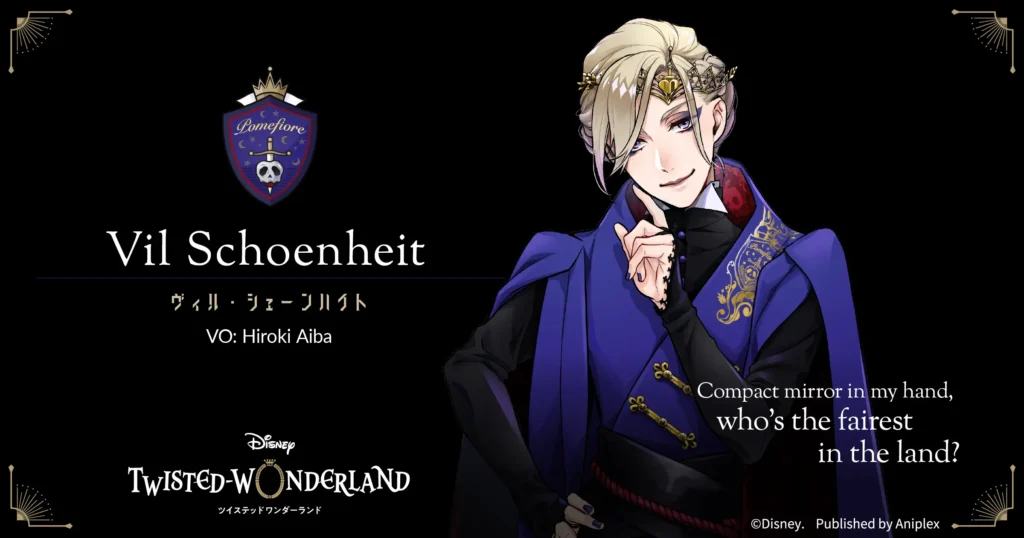
Before delving into Vil Schoenheit’s metamorphosis, it is imperative to examine the foundational design principles of the Evil Queen. Her iconic presence, deeply rooted in historical symbolism, laid the groundwork for Vil’s modern interpretation. By examining the Evil Queen’s design in the context of her narrative, we gain insight into how these elements were cleverly adapted to suit a contemporary audience while retaining the allure of an ageless tale.

The Evil Queen, as depicted in classic folklore, epitomizes the embodiment of vanity and power. Her design, a manifestation of visual opulence, immediately conveys her position of authority within the narrative. The deliberate choices in her appearance—her alluring yet sinister visage, the contrast of her pale complexion against stark dark makeup, and her imposing attire—communicate her villainous intent with unmistakable clarity. These elements introduce us to her aristocratic grandeur and cold demeanor, key characteristics that define her role in the story.
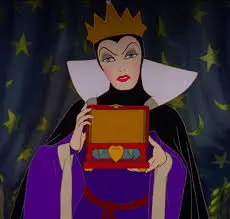
Her vibrant purple garments, imbued with historical symbolism of royalty and exclusivity, reinforce her stature within the narrative. Historically, the color purple has been synonymous with elite status, a shade reserved for rulers and deities due to the laborious process required to produce it. In this context, the Evil Queen’s attire is not only a testament to her wealth but also an indication of her character’s profound sense of self-importance and vanity.
In designing the Evil Queen, the choice of accessories and apparel were deliberate and meticulously aligned with historical context. The fur-trimmed cape, flowing elegantly with her movements, accentuates her majestic silhouette, and conveys a sense of power. Her dark, enveloping balaclava introduces a calculated air of mystery, suggesting a character who remains distant and calculated in her actions. This design, while striking, is also reflective of the tale’s medieval roots, providing a visual anchor that grounds her narrative in historical authenticity.
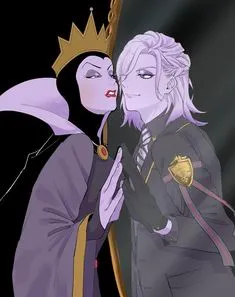

In crafting Vil Schoenheit, the designers skillfully bridged the timeless allure of the Evil Queen with a contemporary audience. Vil’s design retains the regal essence of his predecessor while introducing elements that resonate with modern sensibilities. His distinct color palette—while echoing the archetypal purples of the Evil Queen—is refined for a contemporary vibe, with an artful blending of indigo hues that exude sophistication.
One of the remarkable aspects of Vil’s design is the symmetrical yet nuanced arrangement of colors, guiding the viewer’s gaze with intent. The understated red details, placed thoughtfully within the ensemble, complement his overall aesthetic without overshadowing the central design. The fusion of muted gold accents, integrated seamlessly into the attire, highlights Vil’s status with a tasteful elegance.

In contrast to the flowing gowns of the Evil Queen, Vil’s attire leans towards contemporary interpretations of ceremonial wear, exhibiting influences of kimonos and robes. This evocation of androgyny reflects Vil’s beliefs regarding beauty, transcending traditional gender constructs. The crown, a hallmark of the original Evil Queen design, undergoes a transformation—subtle yet ornate, embellished with motifs alluding to the Evil Queen’s narrative. This design intricacy adds layers to Vil’s character, rendered both relatable and freshly reimagined for the modern age.

Vil Schoenheit’s narrative arc ventures beyond character design, delving into a nuanced exploration of ambition, identity, and societal expectations. Unlike archetypal portrayals that narrowly interpret the Evil Queen’s vanity, Vil’s characterization goes deeper, dissecting the implications of being the “fairest of them all.” Through Vil, the narrative redefines the traditional interpretation of beauty, encouraging the pursuit of internal and external excellence.
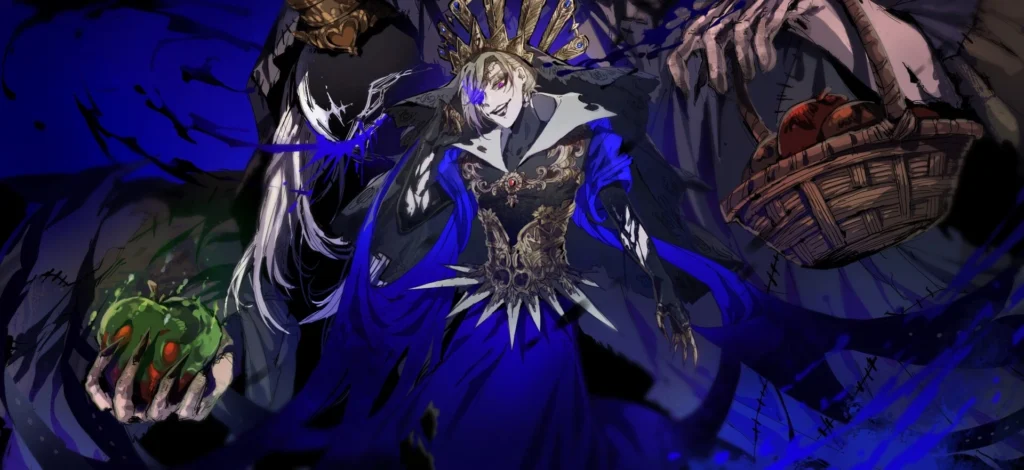
Vil’s dedication to mastering his craft—exemplified through his candid critiques and unwavering commitment to perfection—offers a multifaceted portrayal of ambition. Despite the pressures of external validation, Vil strives for a holistic embodiment of fairness, pursuing an ideal that transcends mere physical attributes. This pursuit challenges conventional notions of beauty, narratively asserting that true elegance is an amalgamation of character, intellect, and aesthetics.
The contrast between Vil and other characters further enriches the complexity of his narrative. His directness and self-assuredness, juxtaposed against the archetype of the imperious villain, present a refreshing take on character dynamics. Vil navigates the societal milieu not as a mere antagonist, but as a character challenging the constraints of predefined roles, thereby expanding the horizon of potential interpretations for characters inspired by the Evil Queen.

Vil Schoenheit’s character in Twisted Wonderland offers a profound exploration of gender expression, particularly through his androgynous presentation and demeanor. Notably, Vil uses the Japanese pronoun “atashi” (アタシ) to refer to himself—a term traditionally associated with femininity but utilized by individuals of any gender. This linguistic choice underscores his embrace of both masculine and feminine traits, challenging conventional gender norms.
In an interview, Vil’s voice actor, Hiroki Aiba, highlighted the intentional portrayal of Vil’s androgyny:
“When it was decided that I was going to portray Vil Schoenheit, I was told straight-out, ‘his personal pronoun is ‘Atashi’’ and ‘he is androgynous’ (laughs).”
Twisted Wonderland Reference Note: VA Interview
Vil Schoenheit’s narrative presents an opportunity for examining gender expression in a dimension seldom explored in male-centric narratives. The tension between societal expectations and personal identity is pivotal to understanding Vil’s journey, as he embodies a spectrum of characteristics typically attributed to diverse gender expressions. His ethos—one that embraces the symbiosis of strength and beauty—echoes the core tenets of gender fluidity, allowing for a nuanced exploration of coexistence between gender presentation and personal identity.
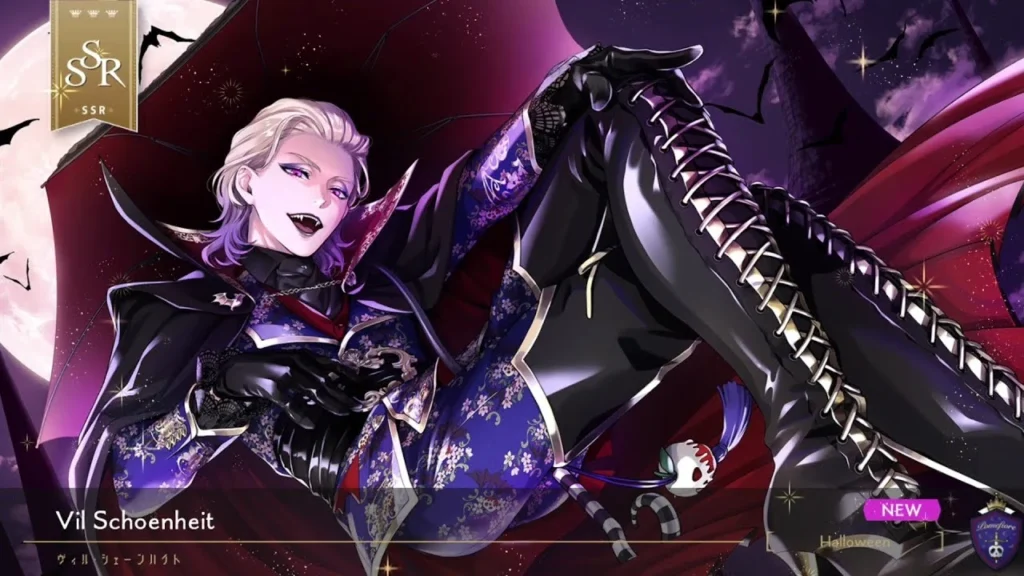
Within Vil’s narrative arc, the character of Epel provides a platform for critiquing toxic masculinity. Vil’s initial attempts to mold Epel into an archetype of grace underscore the complexities of imposing ideals of beauty. Yet, through Epel’s resistance, the narrative highlights that beauty and strength are not defined by societal norms or gender binaries. The resulting dialogue fosters awareness, emphasizing that identity is an individual journey distinct from prescribed societal roles.
Through Vil’s narrative, the broader discourse on gender expression gains depth, advocating for a redefinition of beauty and strength. Vil’s portrayal challenges traditional narratives, offering a vision of empowerment and acceptance that transcends gender prescripts. As narratives continue to evolve, characters like Vil Schoenheit pave the way for more inclusive and diverse representations, celebrating the intersections of identity, beauty, and individuality.
This deliberate characterization enriches the narrative’s discourse on gender fluidity.
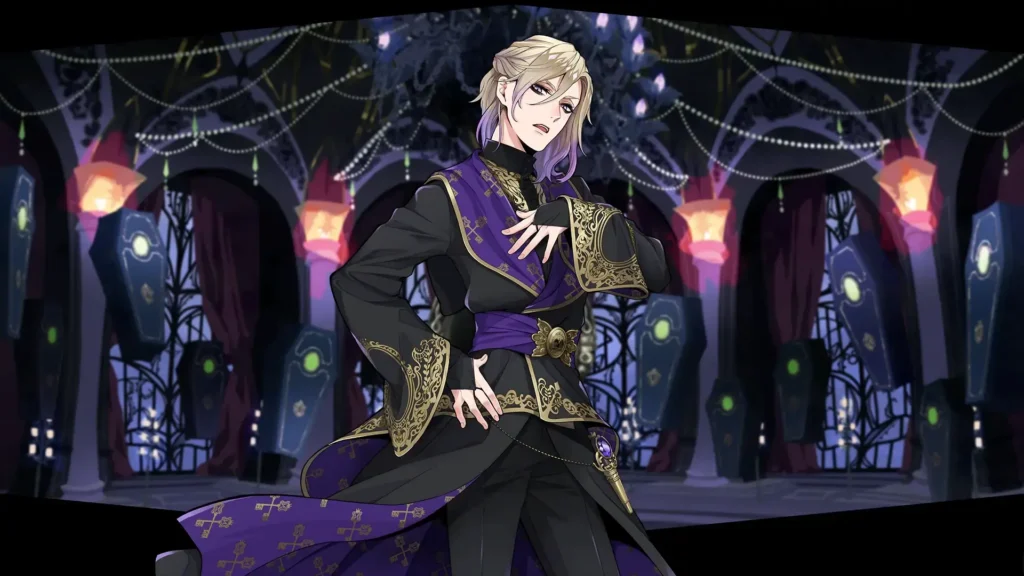
Furthermore, Vil consistently maintains a polite and refined manner of speaking, reflecting his disciplined and composed nature. This courteous demeanor complements his androgynous identity, illustrating that elegance and strength are not confined to traditional gender roles. Through Vil’s interactions, particularly his mentorship of Epel Felmier, the narrative critiques rigid societal expectations and advocates for a more inclusive understanding of identity.
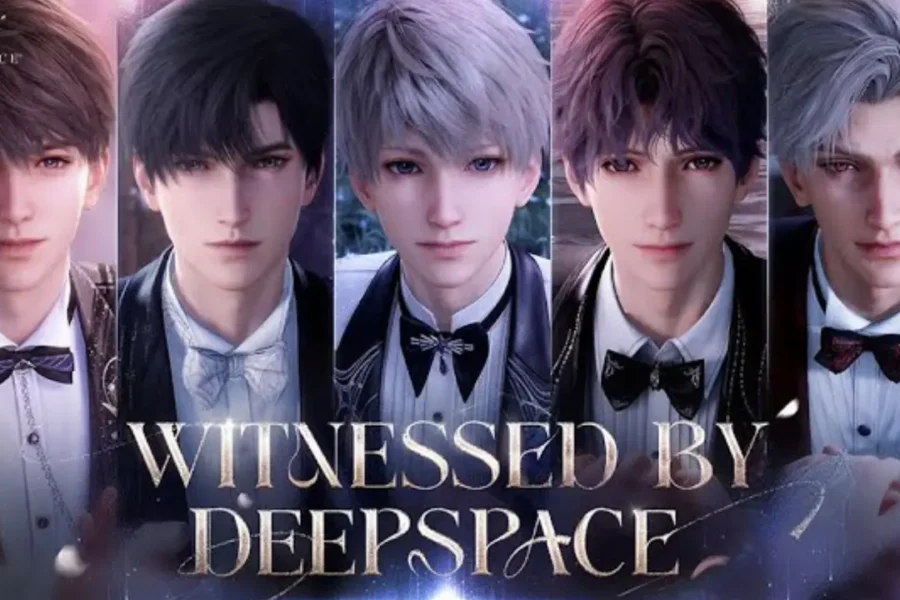
The ‘Witnessed By Deepspace‘ event officially commenced, offering players a unique opportunity to obtain exclusive 5-Star Memories and immerse themselves in new storylines. Running from...
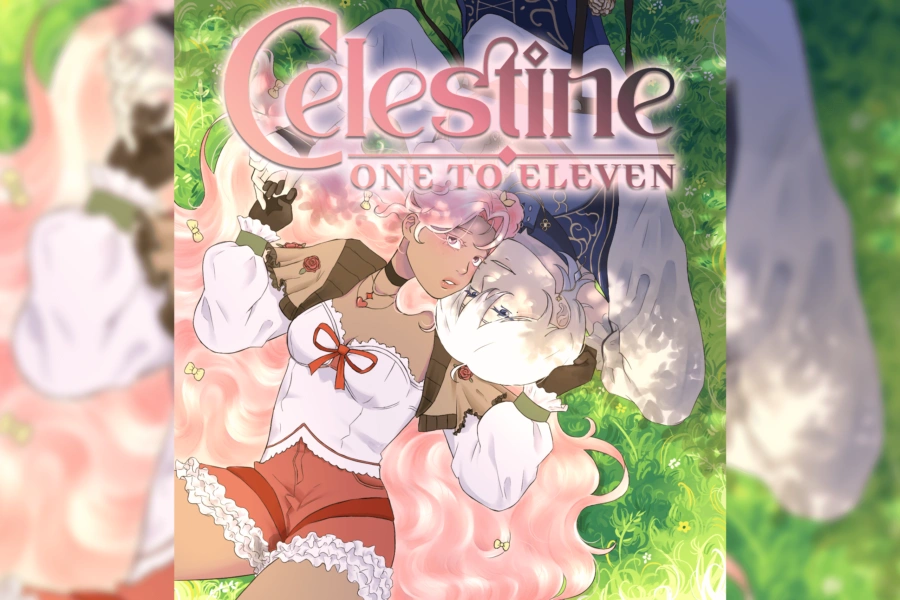
In our latest interview, we got in contact with the creative team behind Celestine: One to Eleven, to dive into the origins of their project...
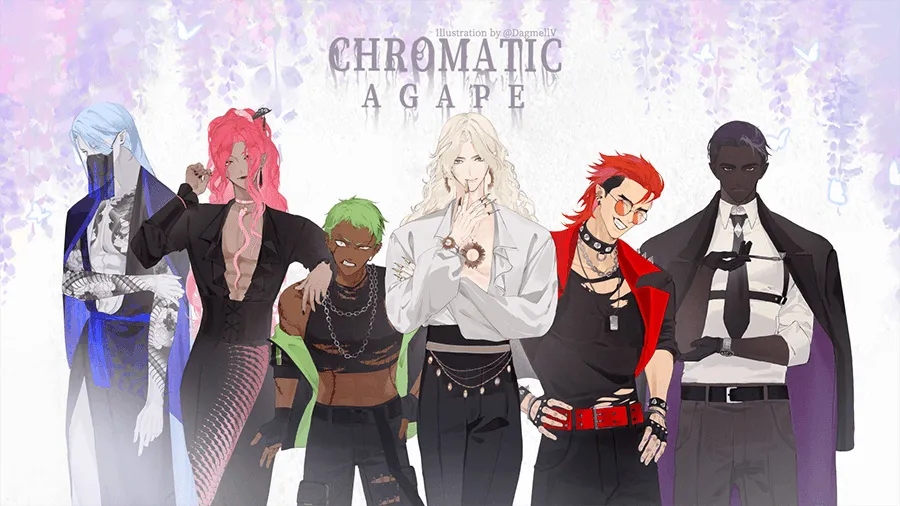
If there’s one thing I love, it’s a good romance—especially the kind that pulls at your heartstrings and makes you rethink your entire existence at...